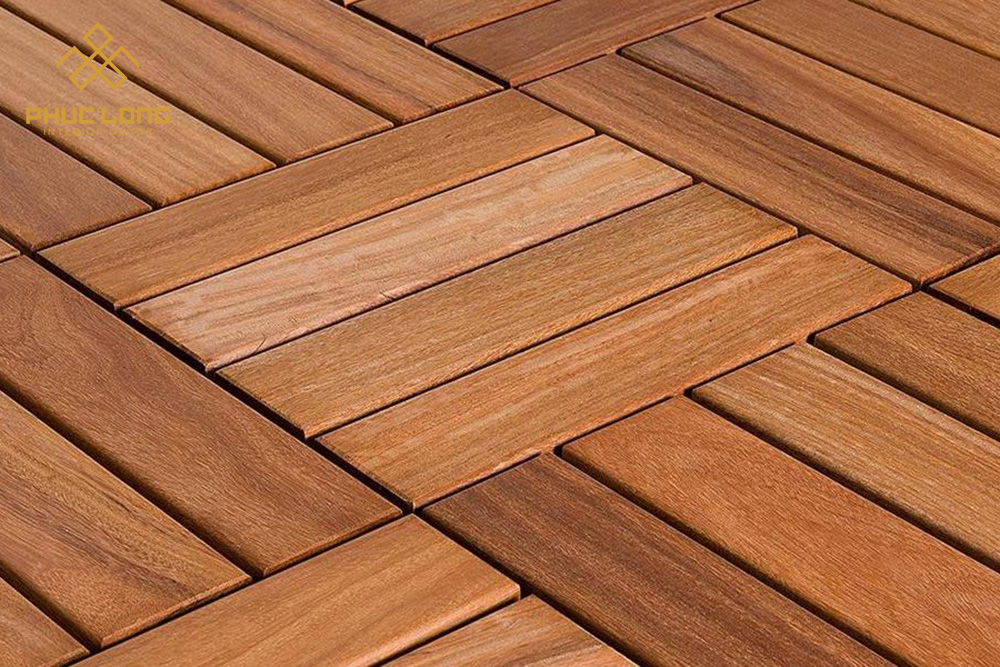Navigating the vast landscape of rubberwood factories in Vietnam is a journey towards quality and innovation. In the pursuit of excellence, connecting with the right manufacturer becomes a pivotal step, unlocking the door to a world of premium products and collaborative possibilities. Finding the perfect rubberwood factories in Vietnam is not just about sourcing materials; it’s about establishing a partnership that fosters quality, reliability, and shared success.
Introduction
A brief overview of the importance of rubber wood manufacturing in Vietnam.
Vietnam stands out as a nation celebrated for its abundant natural resources and vibrant cultural legacy. Within this wealth lies a valuable resource – the adaptable and environmentally friendly rubber wood. Sourced from the resilient Pará rubber tree, rubber wood is both versatile and sustainable. These trees thrive in expansive industrial forests spanning hundreds of thousands of hectares, primarily concentrated in Southern Vietnam, encompassing a substantial 71% of the nation’s rubber plantation area.
Explanation of the significance of finding reliable manufacturers for sourcing rubber wood products.
Rubber wood holds a notable position within Vietnam’s wood processing industry. As the world’s fifth-largest rubber planting area, Vietnam boasts an extensive 918,600-hectare expanse dedicated to rubber cultivation as of 2022. Within the complete production cycle of the rubber tree, wood emerges as the final product, playing a pivotal role in Vietnam’s domestic supply chain. This valuable resource adeptly caters to the diverse requirements of the wood processing sector.
Vietnam’s rubber wood, sourced from a transparent and legitimate origin, has firmly established itself as a key contributor to the wood processing industry. In 2022 alone, the turnover of wood and wood products derived from rubber wood reached an impressive nearly US$ 2.14 billion, indicating significant potential for future growth.
According to a report jointly conducted by Forest Trends, the Vietnam Rubber Research Institute, and the Vietnam Rubber Association in 2022, rubber wood is identified as one of the primary domestic raw materials for Vietnam’s wood industry. Renowned for its exceptional quality, versatility, and consistent supply, rubber wood holds a distinguished position as a leading sustainable choice for various applications.
Why Choose Vietnam for Rubber Wood Manufacturing
Discuss Vietnam’s reputation as a leading producer of rubber wood.
Rubber stands out as one of Vietnam’s key industrial crops, alongside pepper, coffee, and cashew. The nation’s rubber production encompasses natural rubber, processed rubber products, and furniture crafted from rubberwood. With the government actively engaging in the signing and negotiation of free trade agreements, the industry is poised for further expansion in the export market, presenting promising opportunities for growth.
Abundance of rubber plantations, a skilled labor force, and competitive pricing.
In Vietnam, rubber trees are cultivated within vast industrial forests spanning hundreds of thousands of hectares, primarily concentrated in the southern region, which constitutes 71% of the nation’s rubber plantation area. These trees can be tapped for latex starting in their fifth year of growth.
With a population exceeding 98 million, Vietnam boasts a labor force that constitutes 57% of its populace. The nation’s primary sectors, including manufacturing (representing 16% of GDP), services (51%), and agriculture (14%), employ the majority of this workforce, maintaining a low unemployment rate of 2.19% in Q1 of 2021.
A significant driver of this economic activity stems from a notable trend wherein young workers transition from traditional agriculture to the more technologically advanced services industries. This shift occurs concurrently with increased mechanization within the agriculture sector.
Given the relatively recent development of Vietnam’s workforce, it’s not uncommon to encounter challenges in sourcing highly skilled employees, with only 11% of the domestic workforce considered highly skilled. To address this, the government is actively promoting workforce development through vocational certificates and university programs.
Understanding Rubber Wood Manufacturing Process
An explanation of the process involved in harvesting and processing rubber wood.
Harvesting and processing rubber wood involves a meticulous series of steps to ensure quality and sustainability. It begins with the careful selection of mature rubber trees, typically around 25 to 30 years old, for harvesting.
These trees are then carefully cut down, and the latex-producing bark is stripped away. The harvested logs are transported to processing facilities, where they undergo a thorough drying process to reduce moisture content and prevent warping or decay.
Next, the logs are cut into smaller, manageable pieces and processed into various wood products, such as lumber, veneer, or engineered wood. Advanced machinery is often employed during this stage to precisely shape and size the wood according to the desired specifications.
Finally, the processed rubber wood is inspected for quality and undergoes treatment to enhance its durability and resistance to pests and decay. Throughout the entire process, strict adherence to sustainability practices ensures minimal environmental impact and the responsible use of this valuable natural resource.
An overview of the different types of rubber wood products manufactured in Vietnam.
Rubberwood, prized for its versatility and durability, finds extensive applications across various domains, ranging from the crafting of tables and chairs, wardrobes, and beds to the fabrication of countertops for kitchen, living room, or office spaces.
In Vietnam, particularly, rubberwood reigns as a cornerstone material within carpentry workshops and furniture factories, serving as the primary medium for artisans and manufacturers alike to create an array of finely crafted furniture pieces and functional fixtures. Its inherent strength and resilience make it an ideal choice for both indoor and outdoor settings, ensuring longevity and aesthetic appeal in diverse environments.
Moreover, the adaptability of rubberwood allows for intricate designs and detailing, catering to a wide spectrum of aesthetic preferences and design sensibilities. As such, its widespread use underscores its significance as a preferred material in the realm of woodworking and furniture production, contributing to the country’s vibrant craftsmanship and design legacy.
Researching Rubber Wood Manufacturers in Vietnam
Rubberwood Factories in Vietnam
Hoang Thong Wood
Hoang Thong is a leading company in the field of exporting rubber wood and acacia wood products from Vietnam. Hoang Thong specializes in providing the best solutions for customers through a range of high-quality products at competitive and reasonable prices, coupled with excellent customer service.
Company Site: https://www.hoangthongwood.com/
Year Established: 2014
Product and Service: Rubberwood Laminated Board, Indoor Furniture, UV-Finished Butcher Block
Factory Square: 130,000 m2
Production Capacity: 15,000 m3/month
Workforce: 2,700 people
Certifications: FSC-CoC, Sedex SMETA, QSA, C-TPAT, GMP Quality, Carb P2 and EPA
Sudima Panels
Sudima Panels Co., Ltd. was established in 2008 and is a wholly owned subsidiary of Sudima International Pte. Ltd. Singapore. Before establishing Sudima Panels, from 2004 onwards we sourced kitchen cabinet face components for our USA based customers under our parent company Sudima International. In 2008 we saw an opportunity and set up our own manufacturing facility to produce kitchen cabinet doors, drawer fronts, edge glue panels and finger jointed boards. The facility initially started with one production shed, a production area of 4000 Sqm, 100 employees and a monthly production capacity of 15 Containers. The main driving factor that led us to set up our own production facility was to have better control over production quality, production time and cost, enabling us to better serve our customer’s needs.
Company Site: https://sudimapanels.com/
Year Established: 2008
Product and Service: Wood materials for construction and furniture, DIY Wood, Wooden Furniture, Biomass
Factory Square: 30.000 Square Meters
Product Capacity: 158 containeers per month
Workforce: 900 Employees
Utilizing online platforms
Shipping options from Vietnam
Cost to Ship from Vietnam
Vietnam imposes limited restrictions on exports, mainly targeting specific varieties of wood native to the region. Additionally, substantial export duties are imposed on the majority of natural resources, including minerals and plant materials.
Beside that, Vietnam, being a member of the World Trade Organization, benefits from competitive shipping rates to other member nations. However, there are unique expenses associated with shipping from Vietnam that are distinct from those of countries like China.
Notably, Vietnam has not been granted the coveted Most Favored Nation (MFN) trade status by certain nations, such as the United States. Consequently, goods shipped between these countries do not enjoy the same tariff protections as those from other nations.
As an illustration, a 100 percent cotton T-shirt from Vietnam may encounter an average tax of 16.5 percent, while a 100 percent polyester shirt could face a higher tax of 32 percent upon entering the US.
These rates are determined based on the preferences of the destination countries regarding the types of goods they wish to receive and those they do not. In general, shipping rates from Vietnam to the US are as follows:
For airfreight: $22 per kg (based on chargeable weight – 100kg)
For sea freight FCL: $13,500 per TEU
For express couriers: $58 per kg
Places to ship in Vietnam
Major ports of Vietnam
HO CHI MINH CITY (Cat Lai)
In 2018, Cat Lai port in Ho Chi Minh City reportedly managed almost 25% of the total sea cargo, amounting to 293 million metric tons for the entire country. With a throughput of 71 million metric tons, it surpasses the combined capacities of the next four largest ports.
VUNG TAU
Located in the Ba Ria–Vung Tau Province just Southeast of Ho Chi Minh, the Vung Tau port system comprises various ports such as Cai Mep, Phu My, Dinh river, and Ben Dam. It is estimated to handle over 3 million TEUs (twenty-foot equivalent unit cargo containers) annually.
HAIPHONG
Haiphong serves as the primary port for importers in northern Vietnam and is currently undergoing expansion to become a deep-water port capable of accommodating larger vessels. As the main port for the entire northern region of Vietnam, it boasts an annual container volume exceeding 1.15 million TEUs.
International Airports of Vietnam
Hanoi (Noi Bai) International Airport
While Ho Chi Minh boasts the largest port, Hanoi’s airport, situated 45 kilometers to the Northeast of the city, holds the highest capacity for air shipments in Vietnam. In 2017, it reportedly managed a freight volume exceeding 700,000 tons.
Ho Chi Minh (Tan Son Nhat) International Airport
Tan Son Nhat stands as the country’s busiest airport concerning passenger throughput and is conveniently located only six kilometers north of downtown Ho Chi Minh City. In 2017, Tan Son Nhat is estimated to have processed over 550,000 tons of cargo. Presently, the city is in the planning stages for the construction of a larger airport with a specific focus on cargo operations in the coming years.
In the quest to find a rubberwood factories in Vietnam, the search transcends beyond products; it’s about discovering a reliable ally in craftsmanship and innovation. Each manufacturer is a gateway to a realm of possibilities, where dedication to quality meets the artistry of production. Choosing the right partner is not just a procurement decision; it’s an investment in the precision and excellence that defines the melamine industry in Vietnam. Contact us to knows more about wood industry in Vietnam
Read more blogs about the wood industry:






